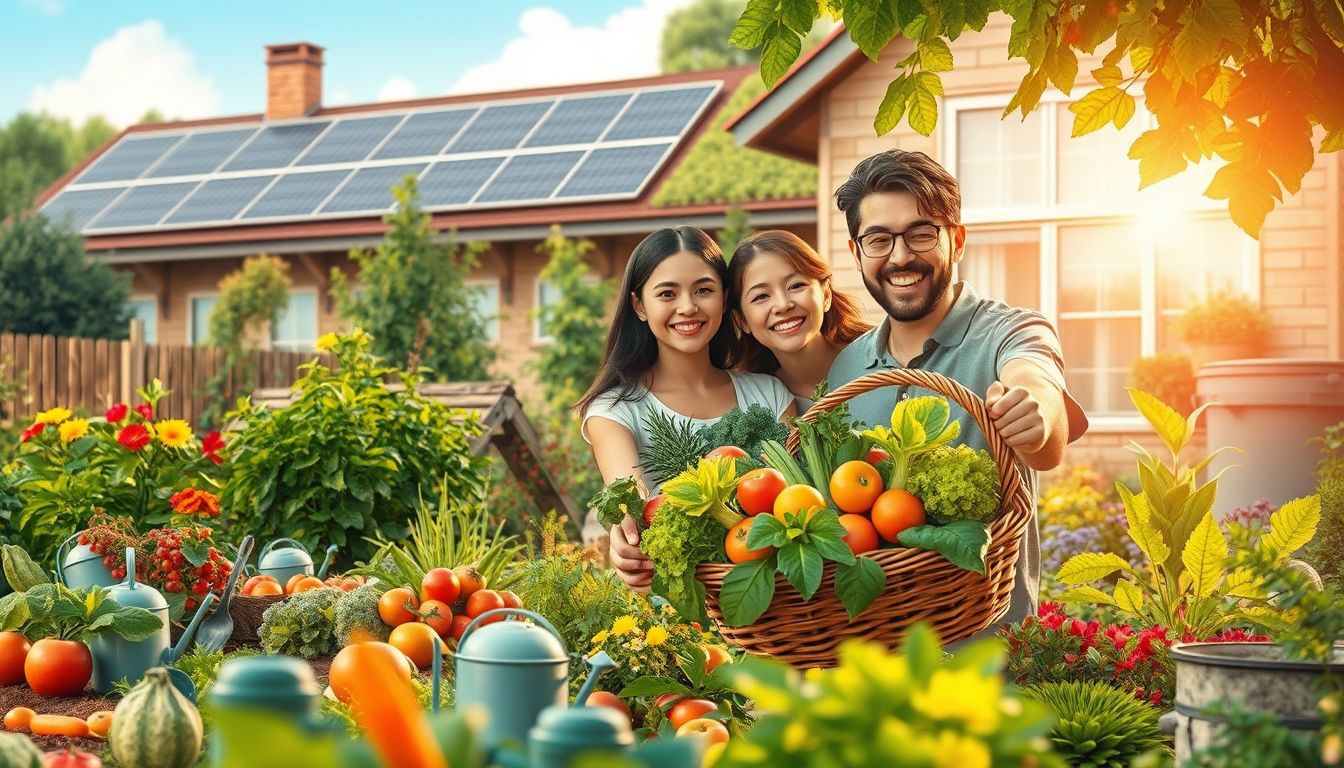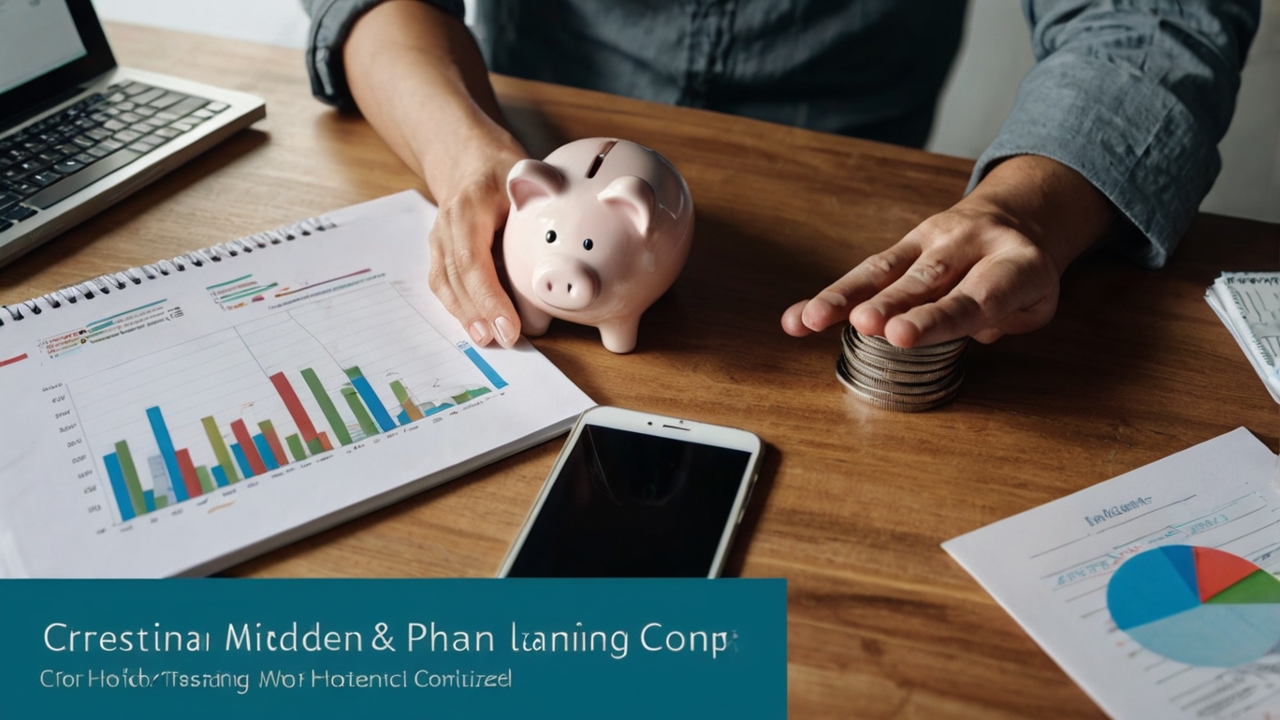Grow and Save: A Comprehensive Guide to Home Gardening for Financial Self-Sufficiency
In a world facing constant economic fluctuations and rising food prices, home gardening emerges as a practical and effective solution for achieving financial self-sufficiency and reducing dependence on external markets. Home gardening is no longer just a hobby, but a pressing necessity for individuals and families seeking financial and food security. This article provides you with a comprehensive guide on how to utilize your home space, no matter how small, to produce your own food and save money.
Chapter 1: Why Home Gardening Now?
Home gardening is no longer just a fleeting trend, but a smart response to the economic and environmental challenges we face. Here are some reasons why home gardening is an attractive option:
- Rising Food Prices: Inflation and global market fluctuations lead to a continuous increase in the prices of fresh vegetables and fruits.
- Health Concerns: Traditional agriculture relies heavily on pesticides and chemical fertilizers, raising concerns about consumer health.
- Environmental Sustainability: Home gardening reduces the carbon footprint associated with transporting food over long distances.
- Financial Independence: Producing your own food reduces your reliance on stores and saves you money in the long run.
- Improved Mental Health: Gardening is a calming and relaxing activity that helps relieve stress and improve mood.
Important Statistics:
Studies show that a family that grows part of its food at home can save between $500 and $2000 annually, depending on the size of the garden and the types of crops grown.
Chapter 2: Determining the Appropriate Space
You don't need a large space to start home gardening. Even a small balcony or a sunny window can be enough to grow herbs and leafy greens. Here are some options:
- Traditional Garden: If you have outdoor space, you can create a traditional garden directly in the ground.
- Pot Gardening: Suitable for balconies and small spaces. You can grow vegetables and fruits in pots of various sizes.
- Vertical Gardening: An ideal solution for tight spaces. You can use walls to hang pots or create vertical structures for planting.
- Hydroponics: A soil-less cultivation system that relies on water and nutrients. Ideal for indoor cultivation.
Practical Tip: Before starting, assess your available space and the amount of sunlight it receives. This will help you choose the right plants.
Chapter 3: Choosing the Right Crops
Choosing the right crops depends on your region's climate, available planting space, and personal preferences. Here are some easy-to-grow crops suitable for beginners:
- Leafy Greens: Lettuce, spinach, arugula, kale. They grow quickly and easily and provide a continuous harvest.
- Herbs: Mint, parsley, coriander, basil. Easy to grow in pots and used in many dishes.
- Tomatoes: One of the most popular vegetables and easy to grow in pots or in the garden.
- Peppers: Grow well in warm climates and are available in various colors and sizes.
- Radishes: Grow very quickly and can be harvested within a month.
Example from the Arab Market: In the Gulf region, tomatoes, cucumbers, and peppers are common crops grown in greenhouses or home gardens.
Chapter 4: Preparing the Soil and Fertilizing
Healthy soil is the foundation of successful gardening. If you are planting in pots, use high-quality potting soil. If you are planting in the garden, improve the soil by adding organic fertilizer and compost.
- Organic Fertilizer: Provides essential nutrients for plants and improves soil fertility.
- Compost: A natural fertilizer made from food and plant scraps. You can make it at home or buy it ready-made.
- Chemical Fertilizers: Use them with caution and according to the instructions on the package.
Practical Tip: Analyze the soil to determine acidity levels and nutrients. This will help you choose the right fertilizers.
Chapter 5: Watering and Plant Care
Regular watering and good plant care are essential for a bountiful harvest. Here are some tips:
- Watering: Water plants regularly, especially during hot and dry weather. Avoid overwatering, as it may lead to root rot.
- Weed Removal: Remove weeds regularly, as they compete with plants for water and nutrients.
- Pest and Disease Control: Use natural or organic insecticides to control pests and diseases.
- Pruning: Prune plants regularly to improve growth and increase production.
Example: Using neem oil as a natural insecticide is effective against many pests.
Chapter 6: Harvesting and Storage
When crops ripen, harvest them in a timely manner for the best flavor and nutritional value. Here are some storage tips:
- Leafy Greens: Store them in the refrigerator in plastic bags or airtight containers.
- Tomatoes and Peppers: Can be stored at room temperature or in the refrigerator.
- Herbs: Can be dried or frozen to preserve them for longer.
Practical Tip: Use blanching to maintain the color and taste of frozen vegetables.
Chapter 7: Sustainable Gardening
Sustainable gardening aims to preserve the environment and reduce reliance on non-renewable resources. Here are some sustainable practices you can apply in your home garden:
- Water Recycling: Use rainwater or gray water to irrigate plants.
- Organic Gardening: Avoid using pesticides and chemical fertilizers.
- Companion Planting: Planting different plants together to improve growth and reduce pests.
- Home Composting: Making compost from food and plant scraps.
Example: Planting basil next to tomatoes helps repel pests.
Chapter 8: Saving Money Through Home Gardening
Home gardening is not just a hobby, but a smart investment that saves you money in the long run. Here are some ways you can save money:
- Reducing Food Expenses: Producing your own food reduces your reliance on stores and saves you money.
- Avoiding Buying Organic Foods: Growing organic foods at home is much cheaper than buying them from stores.
- Selling Surplus: If you have a surplus of crops, you can sell them to neighbors or at local markets.
- Saving Money on Fertilizers: Making homemade compost saves you money on buying commercial fertilizers.
Statistics: A family that grows part of its vegetable needs can save up to 30% of its monthly food budget.
Chapter 9: Challenges and Solutions
You may face some challenges when starting home gardening, but there are solutions for every challenge. Here are some common challenges and proposed solutions:
- Lack of Space: Use vertical gardening or pot gardening.
- Lack of Sunlight: Use grow lights or choose plants that tolerate shade.
- Pests and Diseases: Use natural or organic insecticides.
- Lack of Time: Choose easy-care plants and allocate a specific time for gardening each week.
Practical Tip: Join local gardening groups online to get support and advice from experts.
Chapter 10: Conclusion: Home Gardening is Your Path to Financial Independence
Home gardening is more than just a hobby; it's a smart strategy for achieving financial self-sufficiency, improving your health, and preserving the environment. Start today and enjoy the benefits of home gardening!
Important Note: This article provides general information about home gardening. For more detailed information, consult an agricultural expert or look for reliable sources.




